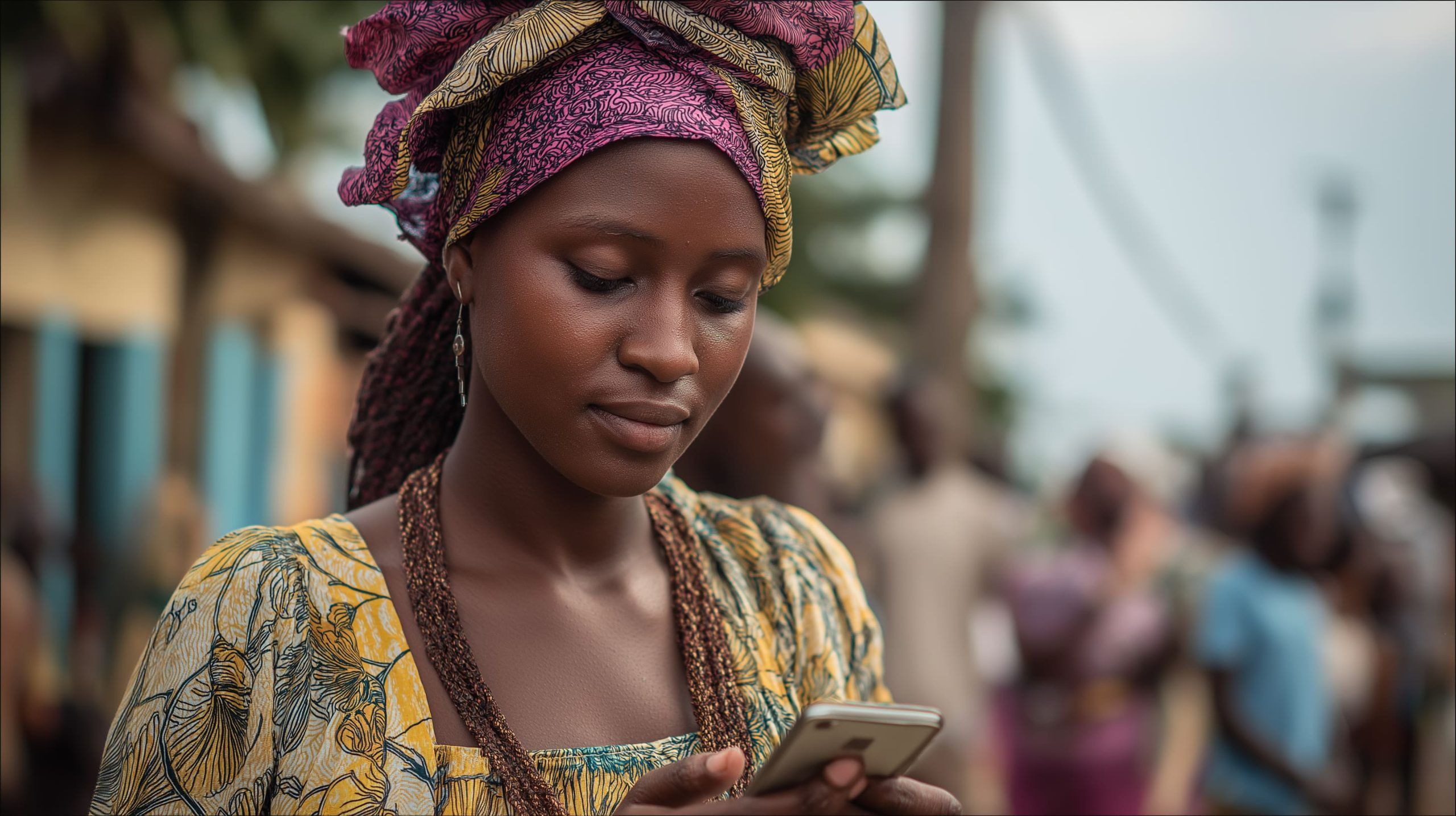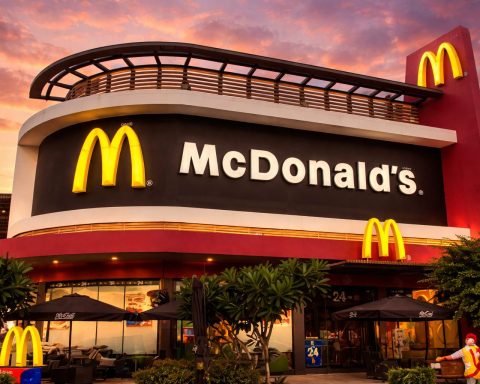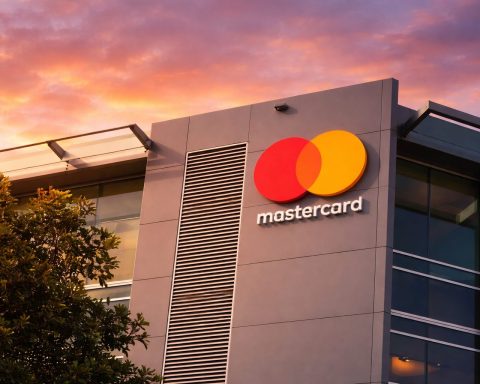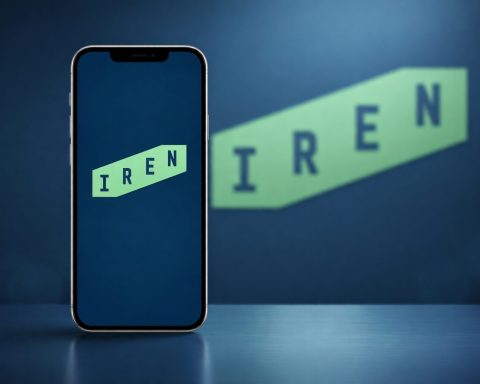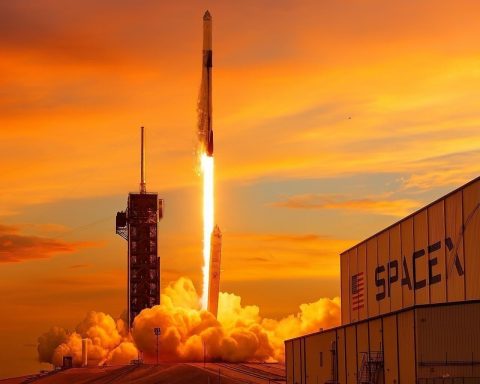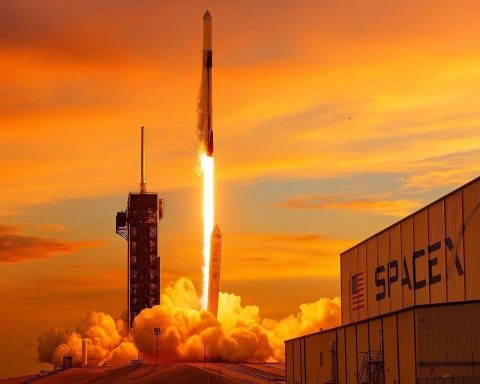- As of early 2023, Guinea had 13.46 million active cellular connections, about 96% of the population.
- The National Fiber Optic Backbone was completed in 2020, spanning 4,352 km, built by Huawei with a China Eximbank loan, connecting 33 prefectures and 62 cities and providing backhaul for mobile operators.
- Fixed broadband is extremely limited, with fewer than 900 fixed broadband subscribers in 2022.
- GFO, a newly licensed wholesale fiber provider, began offering open-access fiber interconnection in 2023 to lower costs and expand fiber links.
- Orange Guinée dominated the mobile market in 2024 with about 75% of subscribers; MTN Guinea held about 20.7% in mid-2024 and exited in December 2024, with Telecel set to acquire MTN’s network and about 2.8 million users.
- The government planned to revive a state-owned Guinée Télécom with tests in late 2022 and a commercial launch that had not occurred by mid-2025.
- Guinea relies on the ACE submarine cable as its sole international link, making it vulnerable to outages, unlike neighboring Côte d’Ivoire with six cables.
- Starlink is not yet officially available in Guinea as of mid-2025, though the regulator ARPT warned against unauthorized use in April 2024, and Starlink is listed as “expected to launch in 2025” on its rollout roadmap; Starlink promises 50–150 Mbps speeds with 20–40 ms latency.
- Prices and hardware for Starlink in nearby markets include a $400 hardware kit and about $63 per month unlimited data, plus a $205 Starlink Mini kit.
- In 2023, internet users numbered about 4.87 million (roughly 34.7% of the population per datareportal; other sources estimate 26.5%), with national penetration around one-quarter to one-third and about 65% of Guineans offline, especially in rural areas.
Guinea, a West African nation often overshadowed by its neighbors, is undergoing a quiet digital transformation. Long marked by limited connectivity, the country is now seeing gradual improvements in internet access through mobile network expansion, new fiber-optic infrastructure, and emerging satellite services. This report provides a comprehensive overview of Guinea’s internet landscape – from current infrastructure and service providers to government initiatives and challenges – and compares its progress with neighboring countries. Despite low baseline indicators (only about one-quarter to one-third of Guineans use the internet as of 2023 [1] [2]), recent developments suggest Guinea is steadily getting online, bridging a digital divide in a way that has largely gone untold.
Overview of Current Internet Infrastructure in Guinea
Guinea’s internet infrastructure remains in early stages of development, but it spans multiple technologies: mobile networks dominate, while fixed broadband and public access points are nascent.
- Mobile Networks: Mobile telephony is the backbone of Guinea’s connectivity. As of early 2023, there were 13.46 million active cellular connections – roughly 96% of the population [3]. Three GSM operators cover the country with 2G voice and basic data, and have rolled out 3G and limited 4G LTE in urban areas. Mobile broadband (3G/4G) is the primary way Guineans get online, given the scarcity of fixed lines. By 2024, over 87% of mobile connections were on 3G/4G networks in some neighboring countries like Liberia [4], and Guinea is following a similar trajectory of upgrading 2G-only areas to mobile broadband. However, rural coverage gaps persist – while main cities enjoy relatively good mobile signal, many remote villages still have weak reception or rely on older 2G networks.
- Fixed-Line and Fiber-Optic Broadband: Guinea’s fixed-line telephone network virtually collapsed after the 2010s due to the bankruptcy of the state incumbent SOTELGUI [5]. Fixed broadband services are extremely limited and expensive, with only a few hundred subscriptions nationwide. In fact, in 2022 Guinea had fewer than 900 fixed broadband subscribers in a country of ~14 million [6] – effectively near-zero penetration. There are some bright spots: a National Fiber Optic Backbone was completed in 2020, spanning 4,352 km across all regions [7] [8]. Built by Huawei with Chinese Exim Bank financing, this backbone connects 33 prefectures and 62 cities via high-capacity fiber [9]. The fiber network, which expanded its length by 17% in 2023 alone, now links major towns and provides backhaul for mobile operators [10]. Still, last-mile fixed broadband (e.g. DSL or fiber-to-the-home) remains rare outside elite business or government users in Conakry. A newly licensed wholesale provider, Guinéenne de Fibre Optique (GFO), began offering open-access fiber interconnection in 2023 to lower costs for ISPs and expand fiber links to operators [11]. This has started to modestly reduce prices for end-users and improve network capacity.
- Public Wi-Fi and Community Access: Given low home broadband penetration, public access plays an important role. Cybercafés remain a common way to get online in cities. The government and partners have also launched initiatives like the “SchoolWeb” Wi-Fi network to bring internet to educational institutions [12]. Telecenters have been set up in some communities as shared connectivity hubs [13]. These efforts, though small in scale, aim to provide Wi-Fi hotspots at universities, schools, and community centers so that people without personal internet can connect. In rural areas, NGOs and development programs have occasionally deployed satellite-backed Wi-Fi hotspots (for example, at health clinics or community centers) to serve villages beyond the reach of telecom networks. Overall, public and communal internet access in Guinea is still limited, but it is a focus of digital inclusion programs.
Internet Penetration, Speed and Cost
Usage and Penetration: Internet use in Guinea has grown substantially in the past few years, but it remains low by global standards. There were about 4.87 million internet users in Guinea at the start of 2023, representing roughly 34.7% of the population [14]. (Other official estimates put usage closer to 26.5% in 2023, reflecting data lags and measurement differences [15].) In practical terms, around two-thirds of Guineans are still offline, especially in rural areas [16]. Internet penetration has been rising slowly – up from around 20–25% in the late 2010s – thanks to the expansion of mobile broadband. Urban youth are the most connected (internet use is far higher in Conakry and other cities), whereas rural populations have very low access. The digital divide is stark: as of 2023, an estimated 65% of Guineans remained offline [17], concentrated in impoverished and remote communities. Improving this penetration rate is a key developmental challenge for the country.
Connection Speeds: The quality of internet connections in Guinea is generally poor, though it is improving gradually. According to Ookla Speedtest data, the median fixed broadband download speed in Guinea was about 8.48 Mbps in early 2023 [18]. This is a very low speed by global standards, but notably it more than doubled (+116%) over the previous year [19] – a sign that new fiber links and network optimizations are slowly boosting fixed-line performance. Mobile network speeds, however, remain among the slowest in Africa. In mid-2022, Guinea recorded a median mobile download speed of only ~2.9 Mbps – the lowest of 21 African operators surveyed [20]. For context, Africa’s mobile leader (South Africa) was nearly 66 Mbps in the same period [21]. Upload speeds on Guinean mobile networks were also dismal (MTN Guinea had a median upload of just 1.5 Mbps, the worst in Africa) [22]. These slow speeds mean that rich content like video streaming or large downloads can be challenging for most users. The launch of 4G in recent years is expected to improve mobile broadband speeds somewhat, but coverage is limited and 4G capacity can be constrained. By contrast, some neighboring countries have far higher mobile speeds (e.g. Senegal’s median mobile speed was ~27 Mbps in 2024 [23]). Guinea’s internet users thus face not just a coverage gap but a speed gap, with connectivity often limited to basic tasks.
Affordability and Cost: The cost of internet access in Guinea is a major barrier for the average citizen. Mobile data prices are high relative to incomes. A 2021 analysis by the Alliance for Affordable Internet (A4AI) found that 1 GB of mobile data cost about $3.60 in Guinea, which equated to 17.9% of an average monthly income [24]. This is nearly nine times higher than the affordability target of 2% of income. In effect, a typical Guinean would have to spend almost one-fifth of their earnings just to buy 1 GB – making regular internet use a luxury for many. For example, an entry-level monthly data bundle (e.g. 1–2 GB) can cost around 20,000 GNF, while bigger packages or home broadband plans easily run into the equivalent of $50–$100, in a country where GDP per capita is only around $1,100. By one estimate, the average internet plan price in Guinea is $73.54 per month [25], though that likely refers to high-end unlimited plans. Public Wi-Fi or shared access points (when available) offer a lower-cost alternative, but they are not widespread. The high cost factor is reflected in usage patterns – many Guineans cautiously ration mobile data, stick to text-based apps, or use free basics when offered. Without significant cost reduction, internet access will remain financially out of reach for a large portion of the population. The government recognizes this and has solicited investments to bring prices down (such as licensing the new fiber wholesaler to drive down bandwidth costs [26]). Still, as of mid-2020s, affordability is one of the toughest hurdles to increasing Guinea’s internet penetration.
Key Internet Service Providers and Market Share
Guinea’s telecom market is relatively small and has undergone consolidation, leaving a few key players. The mobile sector is the centerpiece of the ISP market, since fixed ISPs have minimal presence. As of 2024, Orange Guinée is by far the dominant operator, with roughly 75% of mobile subscribers [27]. Orange (a subsidiary of France’s Orange Group) has been in Guinea since 2007 and leveraged its resources to build the widest network and customer base.
The second major provider was MTN Guinea, part of South Africa’s MTN Group, which had about 20.7% market share as of mid-2024 [28]. However, MTN decided to exit Guinea in late 2024 – reportedly due to the market’s limited size and disputes with the regulator over fees [29]. In December 2024, MTN sold its Guinea operations for a symbolic sum to the government, which assumed MTN’s liabilities [30]. The plan is for a new player, Telecel, to take over MTN’s network and subscriber base [31]. Telecel Group (a pan-African telecom investor) signed an agreement to acquire MTN’s Guinée assets in 2024 [32]. Once finalized, Telecel will effectively become the second-largest operator, inheriting MTN’s ~2.8 million users. This transition is ongoing, meaning the competitive landscape is in flux.
The third operator is Cellcom Guinée, which entered the market in the 2000s. Cellcom’s market share has dwindled drastically – from 21% in 2014 to only 4.6% in 2024 [33]. It struggled to compete and was overtaken by Orange and MTN. Cellcom (originally owned by an Israeli-Liberian group) provides mobile services and some data offerings, but its network coverage and investment have lagged. Despite its decline, Cellcom signaled interest in renewing its licenses and staying active in hopes of capturing some growth after MTN’s exit [34] [35].
In addition to these consumer mobile ISPs, Guinea is establishing a new state-owned operator named Guinée Télécom. This entity is intended to revive the functions of SOTELGUI (the former national telco) and operate fixed infrastructure as well as potentially mobile services. Since 2019, the government has sought investors and partners to launch Guinée Télécom, and network trials were conducted in late 2022 [36]. However, as of mid-2025, Guinée Télécom had not fully launched commercially [37]. Its entry could increase competition, especially in broadband and underserved areas, but the timeline remains uncertain.
For fixed and enterprise internet services, a handful of smaller ISPs exist, though their impact is minor. Companies like MiriNet (Afribone), ETI, Ristel, and Afripa Telecom are mentioned in industry reports [38] as providing niche services (often VSAT connections, corporate data links, or WiMAX in urban zones). Some offer fixed wireless access or satellite broadband to businesses and NGOs. But given the minuscule fixed broadband uptake, none have significant market share in the consumer segment. Most households and businesses simply rely on the mobile operators’ 3G/4G data plans for internet access.
Overall, Guinea’s ISP market is concentrated: Orange is the powerhouse, Telecel (formerly MTN) is poised to be a strong second, and Cellcom is a distant third. The government’s re-entry via Guinée Télécom and the introduction of wholesale fiber by GFO are moves aimed at spurring more competition and lower prices. It’s worth noting that all existing private operators utilize Guinea’s single international cable and backbone, meaning outages or capacity issues affect everyone similarly. The dominance of a couple of players also raises concerns about pricing power – one reason the regulator has been keen to invite new entrants and technologies (including potentially satellite ISPs) to shake up the status quo.
Satellite Internet Access: A New Frontier
One of the most significant recent developments in Guinea’s connectivity story is the looming arrival of satellite internet services. Traditionally, satellites have played a limited role in Guinea’s internet – mainly providing VSAT links for banks, mining companies, or remote government offices where no fiber or microwave links exist. These legacy satellite connections (using geostationary satellites) are expensive and high-latency, thus not widely used for public internet access. However, the new generation of low-Earth orbit satellite broadband – epitomized by SpaceX’s Starlink – promises to change that equation by delivering high-speed, low-latency internet anywhere.
Starlink’s Status in Guinea: As of mid-2025, Starlink is not yet officially available in Guinea, but preparations are underway. SpaceX has been rapidly expanding Starlink across Africa; by May 2024 it was live in 8 African countries and planned in over 25 more [39] [40]. Guinea is listed as “expected to launch in 2025” on Starlink’s rollout roadmap [41]. However, Guinea’s authorities have so far approached Starlink cautiously. In April 2024, the national regulator (ARPT) issued a warning that any unauthorized use of Starlink is illegal, after discovering some individuals had obtained Starlink kits informally [42] [43]. The ARPT noted that Starlink had not yet received approval to operate, and even threatened penal sanctions (1–5 years imprisonment and hefty fines) for anyone installing a satellite terminal without permission [44] [45]. This hardline stance came on the heels of Guinea emerging from an internet blackout – the government had shut down mobile internet and social media for three months (late 2022 to Feb 2023) during political unrest, affecting around 7 million users [46]. The public’s frustration from that episode increased interest in alternative connectivity like Starlink as a way to circumvent censorship [47].
Despite initial regulatory reluctance, it is expected that Guinea will authorize Starlink in due course, given the pressure to improve internet access. Neighboring Guinea-Bissau granted Starlink a license in late 2024 and saw service go live in April 2025 [48] [49]. Once Starlink launches in Guinea (Conakry), it could rapidly extend coverage to rural and underserved regions. A single Starlink user terminal can connect an entire village via Wi-Fi, essentially providing broadband where cell towers or fiber are absent. Officials in other African countries have hailed Starlink as a game-changer for connecting remote schools and clinics [50] [51], and Guinea’s government likewise views satellites as complementary to terrestrial networks for closing the connectivity gap [52].
Availability and Pricing: The exact pricing for Starlink in Guinea will likely resemble that in nearby markets. In Guinea-Bissau, Starlink’s standard service is offered with a hardware kit for $400 and a monthly subscription around $63 (unlimited data), with an option of a 250 GB data-capped plan for $31/month [53]. A cheaper “Starlink Mini” kit has been introduced at about $205 for hardware, targeting affordability [54]. These prices, while far lower than initial Starlink fees in the US or Europe, are still steep relative to local incomes. To mitigate this, regulators in countries like Liberia have negotiated trial licenses and are working with Starlink on localized pricing models [55] [56]. We can expect Guinea’s ARPT to do the same – possibly enabling institutional use (e.g. connecting community Wi-Fi hotspots, schools, or government offices) and encouraging collective or subsidized subscriptions in rural areas. Even if individual subscriptions remain expensive, Starlink could be deployed in shared access scenarios (for example, a village telecenter with a Starlink dish serving many users). Importantly, Starlink’s low-Earth orbit technology brings performance comparable to terrestrial broadband – users can get 50–150 Mbps speeds with ~20–40 ms latency [57], a huge improvement over current norms in Guinea. This capability would for the first time make high-bandwidth applications (like HD video calls, online classes, cloud services) feasible even in a remote Guinean village.
Other Satellite Players: Starlink is the headline name, but it’s not the only space-based internet solution eyeing Guinea. OneWeb, another LEO satellite constellation backed by the UK, has been deploying coverage across Africa and could partner with telecom operators to provide backhaul or rural connectivity (OneWeb’s focus is often B2B or carrier services). Additionally, regional satellite broadband providers such as Eutelsat Konnect and Avanti have beams over West Africa; they offer VSAT-style broadband to homes and businesses via distributors. These services have been available in theory, but uptake in Guinea has been very limited due to cost. As competition heats up (Starlink’s entry has already driven down satellite broadband prices in some regions), we may see other satellite ISPs become more active in Guinea as well. The government in 2023 also joined the African Union’s Smart Africa initiative which promotes universal broadband – satellite connectivity is a key component of that strategy for landlocked and hard-to-reach areas. In short, the satellite expansion in Guinea is poised to go from virtually zero to a significant role in the coming years, representing a potential leapfrog in reaching the unconnected.
Government Policies and Digital Initiatives to Expand Access
The Guinean government has explicitly prioritized improving internet access as part of its national development plans. Recognizing that connectivity is essential for economic and social progress, authorities have launched policies and programs to expand the digital infrastructure:
- Digital Transformation Roadmap: In 2020, Guinea adopted a comprehensive “Digital Road Map” aiming to make the country a leading digital economy in West Africa by 2025 [58]. This strategy emphasizes building infrastructure (expanding broadband networks and electricity supply) and promoting digital inclusion. Key pillars include improving ICT education, fostering tech entrepreneurship, digitizing government services, and investing in telecom infrastructure [59] [60]. The roadmap aligns with regional visions (such as the African Union’s Digital Transformation Strategy) and sets ambitious targets for connectivity and digital skill development by mid-decade.
- Telecom Regulatory Reforms: The Autorité de Régulation des Postes et Télécommunications (ARPT), Guinea’s telecom regulator, has become increasingly active in shaping the sector. In 2023, ARPT adopted a new strategic development plan for the telecom sector covering 2023–2025 [61]. This plan reportedly includes initiatives for expanding rural coverage, enforcing quality of service standards, and updating regulatory frameworks to accommodate new technologies (like satellite services). The regulator has also pushed for SIM card registration (to improve security and reduce fraud) and has periodically audited operators on network coverage obligations. A notable regulatory action was the enforcement against MTN in 2023 for unpaid dues – ARPT demanded the operator settle licensing and frequency fees, which contributed to MTN’s decision to leave [62]. This underscores the government’s insistence on compliance and revenue collection from operators, even as it seeks to attract new investment.
- State-Owned Carrier Revival: The government’s plan to launch Guinée Télécom is a policy response to fill gaps left by the private market. After SOTELGUI (the former state telco) collapsed in 2012, Guinea lacked a national fixed network operator. Guinée Télécom is intended to change that by operating the fiber backbone as a public utility and possibly extending services to rural areas where private ISPs have little incentive to go. While Guinée Télécom’s rollout has been slow, the state has injected capital (with some support from development partners) to get it off the ground. By late 2022, test networks were underway [63]. The new company is expected to focus on broadband (e.g. providing wholesale bandwidth, connecting government offices, and perhaps offering retail fiber or fixed-wireless broadband in cities). This initiative reflects a policy view that market forces alone have not delivered adequate infrastructure, so government must play a role – a trend seen in some other African countries where public-private partnerships are used to extend backbone networks.
- Infrastructure Investment and Loans: The Guinean government has actively courted international financing to fund digital infrastructure. In 2019, it secured a $60 million loan from the World Bank specifically to improve internet infrastructure [64]. This funding (likely under programs such as the West Africa Regional Communications Infrastructure Program, WARCIP) has been used to extend fiber links, build regional inter-connectors, and establish rural connectivity projects. For instance, deals were struck to interconnect Guinea’s national fiber backbone with those of Mali and Côte d’Ivoire in order to improve redundancy and regional coverage [65]. By linking to Côte d’Ivoire, which has access to six submarine cables, Guinea can route traffic through Ivory Coast if its own single cable has issues [66]. The government has also partnered with China on infrastructure – the national fiber backbone was built by Huawei with Chinese loans [67] as noted, and Huawei remains a key supplier for network equipment. Recently, officials explored further partnerships with Huawei to accelerate digital economy projects [68]. Such collaborations fit into Guinea’s broader policy of diversifying partners (World Bank, China, regional neighbors) to achieve its connectivity goals.
- Universal Service and Inclusion Programs: Through its universal access fund (funded by a levy on telecom operators), Guinea has started initiatives to reach underserved communities. This includes establishing community telecenters equipped with internet, expanding mobile network coverage into rural districts via subsidies for tower construction, and supporting projects like “SchoolWeb” Wi-Fi which provided connectivity to schools and libraries in at least ten rural villages (in partnership with organizations like the Internet Society) [69]. Another program has involved equipping universities and technical colleges with campus Wi-Fi and improving their broadband links, on the premise that connecting students yields high social returns. While these programs are relatively small, they form an important part of government’s on-the-ground efforts to broaden access beyond the capital.
- E-Government and Services: In tandem with expanding physical access, Guinea is pushing digital adoption via e-government initiatives. The Ministry of Posts, Telecommunications and Digital Economy has launched online portals for certain public services, and there’s an effort to develop a national digital identity system. The idea is that by moving services like civil registrations, tax payments, or education resources online, citizens will have more reason to get connected. The government also joined the Smart Africa Alliance’s broadband initiative (Broadband 2025) which provides a policy framework for increasing affordability and usage across member states [70].
It’s clear that Guinea’s policy approach combines regulatory measures (to ensure fair play and new tech introduction) with direct investment (infrastructure and a state operator) and strategic partnerships (with donors and tech companies). There are challenges in execution – bureaucratic hurdles, political instability, and limited funding – but the policy direction is set toward expanding internet access as a national priority.
Regulatory Environment and Telecom Authority Role
Guinea’s regulatory environment for telecommunications is evolving to keep pace with technological changes and market dynamics. The Postal and Telecommunications Regulatory Authority (ARPT) serves as the independent regulator overseeing the sector. ARPT’s role is multifaceted: licensing operators, managing spectrum, enforcing service standards, and protecting consumer interests. In recent years, ARPT has taken a stronger stance in several areas:
- Licensing and Market Entry: ARPT controls the granting of telecom licenses. In the late 1990s and 2000s, it liberalized the mobile sector, licensing operators like MTN, Orange, and Cellcom to end SOTELGUI’s monopoly [71]. More recently, ARPT was involved in facilitating the entry of Telecel by approving the transfer of MTN’s license in 2024. The regulator also licensed new entities such as GFO (for fiber wholesale) in 2023 [72], and it holds the keys to licensing any new mobile operator or MVNO, as well as emerging services like Starlink. The case of Starlink highlights ARPT’s gatekeeper role: until ARPT grants formal approval, no satellite provider can legally operate, as evidenced by its bans on unauthorized Starlink use [73] [74]. ARPT has indicated it will not compromise on requiring local authorization and adherence to national laws from foreign providers.
- Spectrum Management: The regulator manages spectrum assignments for mobile networks. It oversaw the allocation of 3G and 4G frequencies to operators (Orange and MTN both launched 4G LTE after receiving licenses in the late 2010s). ARPT is likely preparing for future spectrum needs such as 5G, although 5G is not yet on the immediate horizon in Guinea. The agency monitors that operators use their assigned spectrum efficiently and has the power to revoke or reallocate if necessary.
- Quality of Service (QoS) and Coverage Obligations: ARPT monitors network performance and can impose QoS requirements. For example, it may set benchmarks for call drop rates, data throughput, or coverage of certain percentages of territory. With Guinea’s large rural population, ARPT includes coverage obligations in licenses – requiring operators to extend service to more remote prefectures over time. Enforcement has been a challenge, but ARPT’s 2023–25 strategy explicitly mentions improving service quality [75]. The regulator can fine operators for failing to meet minimum quality or for outages. A notable scenario was the government-ordered internet shutdown in 2022: while ARPT had to technically implement the shutdown directive, it afterward is tasked with preventing undue disruptions and working on guidelines to minimize collateral impact on users and businesses. Balancing government orders with consumer protection is a delicate part of the regulatory environment, especially under transitional or military governments.
- Tariff Regulation and Competition: ARPT has some say in pricing, especially for interconnection rates and wholesale prices. It has worked to ensure that Orange (which has market dominance) offers fair interconnection terms to smaller players. There is also a regime for regulating dominant operator tariffs if they are deemed anti-competitive. For instance, ARPT could step in if Orange were to price data in a way that undercuts new entrants or if there were cartel-like price fixing. In practice, competition has been limited, so prices have been high. ARPT’s promotion of alternative infrastructure (like GFO’s wholesale fiber) is one way it’s trying to indirectly bring prices down by increasing supply and competition at the wholesale level [76].
- Consumer Protection and SIM Registration: The regulator has mandated SIM card registration for all mobile users to enhance security and reduce fraud (a policy common in ECOWAS countries). ARPT also runs consumer awareness campaigns about telecom fraud and has set up channels for users to submit complaints about operators. If users experience unfair billing or poor service, ARPT can mediate or sanction operators. In a related move, ARPT is working on cybersecurity and data protection frameworks in collaboration with other government bodies, which will affect ISPs’ responsibilities in handling user data and content.
- Adaptation to New Technologies: The regulatory environment is gradually adapting to things like VoIP and OTT services, mobile money, and now satellite broadband. ARPT has to consider how to regulate internet-based services that traditional telecom laws didn’t fully anticipate. So far, Guinea has not moved to heavily tax or restrict OTT (e.g. VoIP calling apps) unlike some countries; WhatsApp and others are widely used. ARPT seems more focused on enabling infrastructure and access, as evidenced by its open stance on letting multiple submarine cables land in Guinea (should opportunities arise) and joining regional regulatory associations (like WATRA – the West Africa Telecom Regulators Assembly) to harmonize best practices. The regulator’s willingness to grant a provisional Starlink license (similar to Liberia’s approach [77]) will be a litmus test of its innovation-friendliness. Early signs suggest ARPT will be pragmatic – it halted illegal Starlink use to maintain control, but the fact that Starlink lists Guinea for 2025 implies negotiations are in progress for a lawful entry.
In summary, Guinea’s regulatory regime is strengthening, marked by more assertive enforcement and strategic planning by ARPT. While bureaucracy and political changes (such as the 2021 coup and ensuing transitional government) can influence telecom policy, the general regulatory trajectory is toward a pro-expansion, pro-competition stance – with the regulator as a key enabler (or blocker) of new developments. The success of Guinea’s internet expansion will partly hinge on ARPT’s capacity to implement its plans and keep the market both fair and attractive to investors.
Challenges to Connectivity in Guinea
Despite recent gains, Guinea faces significant challenges in achieving widespread, reliable internet connectivity. Some of the key obstacles include:
- Geography and Infrastructure Gaps: Guinea’s terrain ranges from coastal lowlands to mountainous highlands (the Fouta Djallon) and dense forests in the interior. This geography makes infrastructure deployment difficult and costly – laying fiber or building roads and power lines to remote areas is a major undertaking. Large parts of rural Guinea remain off the electric grid, so telecom towers must run on diesel generators or solar panels, increasing operational costs. The national fiber backbone now links all regions [78], but “last mile” connectivity is lacking – there may be fiber in a district capital, but villages 50 km away have no connectivity. The backbone itself only became operational in 2020; prior to that, operators relied on microwave links and satellite for backhaul, which limited capacity. Even today, some cell sites in far-flung locations use satellite backhaul with limited bandwidth. The single submarine cable landing (the ACE cable) is an infrastructure Achilles’ heel – if that undersea cable has a fault, the entire country’s internet can be knocked out or slowed severely [79]. Indeed, Guinea is one of a handful of countries with just one international cable, which heightens the risk of internet outages due to cable damage [80]. (Côte d’Ivoire’s six cables starkly illustrate how far behind Guinea is in redundancy [81].) Building or obtaining alternative routes – either a second submarine cable or robust terrestrial links via neighbors – is a challenge that Guinea must overcome to ensure resilient connectivity.
- Economic Constraints and Cost: Guinea is a low-income country, and poverty directly impacts internet uptake. With the majority of the population living on modest incomes (and a significant rural subsistence farming community), affordability of devices and services is a major barrier. Many Guineans cannot afford a smartphone, or if they have one, cannot regularly afford data packages. The cost issue was highlighted earlier: 1 GB costing 18% of monthly income on average [82]. This means internet is effectively a luxury for many households. Until costs come down (through market competition or subsidies) and incomes rise, a large swath of the population will remain offline. The government’s ability to subsidize internet or provide free public access is limited by budget constraints. Another economic factor is the operators’ investment capacity – Guinea’s market revenues are small, so private companies sometimes hesitate to invest heavily in network expansion or newer technology, slowing the rollout of improvements like 4G/5G.
- Political and Regulatory Stability: Guinea has experienced political turbulence, including a military coup in 2021 and subsequent transitions. Instability can make telecom investors skittish and delay projects. For example, during periods of unrest, internet service has been deliberately shut down or throttled by authorities (such as the 2022–2023 social media blackout) [83], undermining confidence in the reliability of access. While done for political reasons, these shutdowns have a chilling effect on the digital economy and discourage heavy reliance on online services. Moreover, shifting regulatory decisions – like sudden tax hikes on operators or spectrum fees – can strain the operator-regulator relationship (as seen with MTN’s dispute [84]). The new regime’s policy direction seems supportive of digital growth, but any future instability could disrupt the continuity of ICT initiatives. Ensuring a stable, transparent regulatory environment is itself a challenge that Guinea continues to grapple with.
- Energy and Power Supply: A less discussed but fundamental challenge is power. Internet infrastructure requires electricity – from charging phones to running telecom towers and data centers. Guinea, despite huge hydropower potential, has an underdeveloped power grid. Frequent power outages in cities mean ISPs and mobile networks rely on generators as backup, raising their costs. In rural areas, many telecom towers run on diesel generators full-time. This dependence on fuel not only increases operating costs (passed on to consumers) but also makes consistent service challenging (a tower may go down if fuel isn’t delivered on time). The government’s concurrent drive to expand electrification (e.g. via new hydro dams) is crucial; without improving power infrastructure, the digital infrastructure will always be one step behind.
- Human Capital and Digital Literacy: Another challenge is the human aspect – many Guineans, especially in older generations or rural communities, have limited digital literacy. Even if networks reach them, they may not know how to use the internet’s resources effectively or may be illiterate (Guinea’s literacy rate is relatively low). This limits demand for internet and can reinforce the urban-rural usage gap. The lack of locally relevant content (few websites or services in local languages or tailored to Guinean needs) can also reduce the perceived value of getting online for some. The government and NGOs have recognized this and are doing digital training and encouraging local content creation, but it remains an uphill battle to ensure that connectivity, once provided, is actually utilized to improve lives.
- Security and Reliability Concerns: Users and businesses in Guinea also face trust challenges – cybercrime, scams, and lack of data protection can make people wary of conducting transactions online. The absence of a strong cybersecurity framework or emergency response team means outages or hacks (if they occur) can be prolonged. At the infrastructure level, theft of equipment (like solar panels or fuel from cell sites) and vandalism have occasionally disrupted services in remote areas. The government must address these security and maintenance issues as part of keeping the network reliable.
In summary, Guinea’s path to comprehensive internet access is fraught with structural challenges. It must extend physical infrastructure across difficult terrain, make internet financially accessible to a poor populace, maintain political stability and supportive policies, and invest in power and education to support the digital network. These hurdles are significant, but not insurmountable – countries with similar profiles (like some peers in West Africa) have made strides by tackling these systematically. Guinea is starting to do the same, but the pace will depend on consistent effort and external support.
International Partnerships and Investments in Guinea’s Digital Landscape
International collaboration has been instrumental in Guinea’s gradual internet expansion. Given the country’s limited financial and technical resources, foreign investments and partnerships fill critical gaps:
- Chinese Infrastructure Investment: One of the most impactful partnerships has been with China. The national fiber backbone project was executed by Huawei and financed largely through a concessional loan from China Eximbank [85]. This $238 million project delivered Guinea’s core fiber network, which was completed in 2020 [86]. Chinese firms have also supplied much of the telecom equipment (switches, towers, microwave links) used by operators. The government continues to engage Huawei for potential new phases – for example, discussions to help deploy fiber-to-the-home or expand 4G coverage have been reported [87] [88]. China’s interest aligns with its broader Belt and Road Initiative aims in Africa, treating digital infrastructure as a key sector. For Guinea, the benefit is access to financing and expertise that would otherwise be hard to obtain. However, it also means Guinea’s network is quite dependent on Chinese technology.
- World Bank and Multilateral Support: The World Bank and other multilateral agencies (like the African Development Bank) have supported Guinea’s ICT sector as part of development programs. As noted, the World Bank provided a $60 million loan for internet improvements [89]. This likely funded the connection to the ACE submarine cable years back and possibly Guinea’s membership stake in that cable consortium, as well as cross-border fiber links under the WARCIP initiative. There have also been regional projects under ECOWAS aimed at creating a West Africa integrated network (sometimes called “ECOWAN”), which Guinea partakes in. Through such programs, technical assistance is given to strengthen things like regulatory capacity (World Bank experts advising ARPT on best practices) and digital skills training. The ITU (International Telecommunication Union) has similarly run projects in Guinea focusing on rural connectivity pilots and policy modernization, often in partnership with the government.
- Regional Cooperation: Guinea’s neighbors have been crucial partners in enhancing connectivity. The deals to interconnect fiber backbones with Mali and Côte d’Ivoire [90] mean that Guinea can share international capacity and provide redundancy. For example, Mali (landlocked) can use Guinea’s ACE cable path, and Guinea can use Mali’s links up to Algeria or Ivory Coast’s multiple cables if needed. There is talk of a Mano River Union fiber loop as well, involving Guinea, Sierra Leone, Liberia, and Côte d’Ivoire, to improve regional resilience. Additionally, Guinea joined the Dakar-Abidjan telecom corridor initiative, which is an effort by Senegal, Guinea, Sierra Leone, and Côte d’Ivoire to harmonize cross-border connectivity and reduce roaming costs. In 2021, ECOWAS implemented free roaming among West African states (the “Roam Like At Home” initiative) to which Guinea is a party – this encourages travel and business as people can use mobile data across borders at local rates.
- Private Foreign Investors: The presence of international telecom operators has itself been a form of investment. Orange (France) has consistently invested in Guinea – for instance, Orange Group helped finance Guinea’s ACE submarine cable landing and has poured capital into expanding Orange Guinée’s network (Orange’s investment also brings modern technical knowledge and training for local staff). MTN (South Africa), before exit, invested heavily in network rollout and even started a 4G pilot [91]. Now Telecel (likely funded by international private equity) will inherit and potentially upgrade that network. These companies also bring innovations – Orange introduced mobile money (Orange Money) to Guinea, which now has millions of users doing financial transactions via internet on phones. Likewise, smaller ISP ventures often have foreign ties (e.g. Afribone had links to a Malian ISP; Cellcom was part of a larger group with operations in Liberia and elsewhere). International capacity providers like SES (a satellite operator) have at times partnered to deliver backhaul for mobile networks in Guinea. Moving forward, we might see companies like Google or Meta indirectly investing – for example, Meta’s 2Africa subsea cable includes Orange as a consortium member [92], and if a branch lands in Guinea, it effectively becomes a major foreign investment boosting Guinea’s international bandwidth. The Carnegie Endowment noted that new cables like 2Africa are mostly funded by big tech and could greatly benefit countries like Guinea that currently have only one cable [93].
- Donor-Funded Digital Projects: Various UN agencies and bilateral donors have small projects to help Guinea’s digital development. For instance, the UNDP has supported e-government and innovation hub setups (e.g. training youth on digital skills). The USAID and EU have at times funded community network pilots or extended mobile coverage as part of broader rural development programs (e.g. in areas near mining operations to ensure local communities get benefits). International NGO initiatives like the Internet Society’s chapter in Guinea have brought in expertise to build things like the IXP (Internet Exchange Point in Conakry) to keep local traffic local and improve speeds. That IXP, which was established with help from the Internet Society and African Internet Exchange System project, now allows Guinean ISPs to exchange traffic without routing via Europe, saving bandwidth costs.
- International Academic and Corporate Partnerships: The higher education sector has benefited from programs like AIR (Africa Internet Exchange) and GEANT which connect university networks. Some Guinean universities are now linked to the global research and education network via Senegal, thanks to such partnerships. On the corporate side, mining companies (which are major economic actors in Guinea) often invest in telecom for their operations – for example, a bauxite mining firm might lay fiber to a remote mine and then agree with telecom operators to allow community access on that infrastructure. This kind of public-private partnership has occurred (there were reports of a mining company partnering with a mobile operator to bring 4G to a remote prefecture in Liberia [94], a model that could apply in Guinea’s mining regions).
Collectively, these international engagements are expanding Guinea’s digital horizons. They bring capital, technology, and know-how that Guinea alone would struggle to muster. That said, dependence on external partners also means Guinea’s internet progress can be influenced by geopolitical and global economic currents – for instance, if international bandwidth prices drop due to new cables, Guinea gains; if foreign investors pull back due to global downturns or local instability, Guinea’s projects might stall. So far, the trend is positive: Guinea is more connected to the world, both literally (via cables and satellites) and figuratively (via cooperative initiatives), than it was a decade ago.
Comparison with West African Neighbors
To put Guinea’s internet development in context, it’s helpful to compare it with some neighboring countries in West Africa – Sierra Leone, Liberia, Senegal, and Côte d’Ivoire. These countries share regional similarities but have varied connectivity outcomes:
- Sierra Leone: Like Guinea, Sierra Leone has a predominantly mobile-based internet. Sierra Leone was a late starter in internet connectivity (getting its first submarine cable link in 2013). As of 2023, Sierra Leone’s internet penetration was around 21% of the population [95], which is slightly lower than Guinea’s (~26–35%). By early 2024, some estimates put Sierra Leone closer to 30% penetration after rapid user growth [96], though official ITU figures were in the low 20s. This indicates Sierra Leone and Guinea are in a similar range, with a large majority offline. Sierra Leone’s infrastructure challenges mirror Guinea’s – one submarine cable (ACE) and difficult rural terrain – but it has made progress in expanding 4G in urban areas. Notably, Sierra Leone has also approved Starlink (service went live there in 2024), seeing satellite as a solution for its connectivity gaps [97]. Economically, Sierra Leone is even poorer than Guinea, which is reflected in the affordability issue there too. Both countries suffer from frequent electricity outages and have seen government-ordered internet restrictions (Sierra Leone experienced a days-long social media shutdown in 2022). Overall, Guinea and Sierra Leone are roughly on par in internet development, with Guinea possibly a notch ahead in users percentage, but both lagging behind global averages.
- Liberia: South of Guinea, Liberia has a smaller population (~5.4 million) and similarly relies on mobile operators (Orange and MTN) for internet. Liberia’s internet penetration is approximately 30–33% as of 2023 [98] [99], comparable to Guinea’s. In fact, Liberia’s ~32% in early 2025 translates to 1.84 million users [100], which is a one-third share of its population – very close to Guinea’s one-third of a much larger population. Liberia’s mobile infrastructure is somewhat better in the capital Monrovia, but its interior regions are as under-connected as rural Guinea. One difference is that Liberia already embraced Starlink: it granted a license in late 2024 and planned a full commercial launch by 2025 [101]. Liberian authorities, much like Guinea’s, view satellite internet as a way to “leapfrog” traditional infrastructure, but they are also concerned about pricing [102]. Both Liberia and Guinea have only one submarine cable (ACE for Liberia as well), making them vulnerable to the same outages. In terms of speed, Liberia’s fixed broadband speeds (~7.3 Mbps median [103]) and mobile speeds are in the same low range as Guinea’s. One could say Liberia and Guinea are at a similar stage – both are gradually recovering from past conflicts/instability and investing in ICT, with heavy reliance on external aid. If anything, Guinea’s larger economy and Chinese investments in fiber give it a bit more backbone infrastructure than Liberia, but Liberia has moved a bit faster on policy innovation (e.g. issuing a Starlink license trial).
- Senegal: To the north, Senegal stands as a regional leader in ICT and offers a contrast. Senegal’s internet penetration is about 58–60% – roughly double Guinea’s rate [104] [105]. Over 10.7 million Senegalese were online by 2024 (out of ~18 million) [106], thanks to a more mature telecom market led by Orange’s affiliate SONATEL. Senegal has benefitted from early liberalization and multiple submarine cables (it has links to at least two major cables – ACE and SAT-3, plus others in progress). Consequently, Senegal enjoys better speeds (median mobile 27 Mbps and fixed 22 Mbps in 2024) [107] and lower data costs than Guinea. The government in Senegal has been proactive for decades in ICT policy, making Dakar a hub for tech startups and digital services. Public Wi-Fi projects (like “Digital Park” hotspots) and extensive 4G coverage (even 5G pilots now) put Senegal well ahead. That said, Senegal still has 40% offline (mainly in rural and poorer areas) [108], showing that even a leading country faces inclusion challenges. Compared to Guinea, Senegal’s connectivity is more advanced on every metric – coverage, usage, speed, affordability – but the gap is narrowing slowly as others catch up. Guinea often looks to Senegal as a model; for example, Guinea is piggybacking on Senegal’s IXPs and data centers for routing some of its traffic [109].
- Côte d’Ivoire: To the east, Côte d’Ivoire (Ivory Coast) is another relatively advanced peer. With a population around 27 million, it had roughly 40–45% internet penetration in 2023 [110] [111]. That means around 12–13 million Ivorians online, far exceeding Guinea’s absolute number of users. Côte d’Ivoire’s telecom market is competitive (Orange CI, MTN, Moov), and it has a strong infrastructure base – Abidjan is a landing site for at least half a dozen submarine cables, giving abundant international bandwidth [112]. Internet costs in Ivory Coast have consequently come down over time, and services like 4G are widespread (with 5G tests underway). Ivory Coast also leverages its cables to serve neighbors (as noted, Guinea is now connecting to Ivory Coast’s network for redundancy [113]). While Ivory Coast’s penetration (40-45%) is lower than Senegal’s, it is still much higher than Guinea’s ~30%. The urban-rural divide is significant there too, but the government has a national broadband plan that’s rapidly extending fiber to secondary cities and rolling out e-government. Ivory Coast has not yet officially launched Starlink as of mid-2025, but it’s on the roadmap for late 2025 [114]. In regional rankings, Ivory Coast’s connectivity is generally above the African average in terms of user share and speeds. For Guinea, Ivory Coast is an important comparator because both are Francophone and share some cultural ties – yet Ivory Coast has managed to become a telecom hub (with data centers, regional offices of tech companies, etc.), whereas Guinea is still primarily a consumer of connectivity. The gap is partly due to Ivory Coast’s higher GDP and stability since the late 2010s, allowing more investment. Guinea can glean lessons from Ivory Coast’s liberalization and infrastructure drives, especially leveraging private-public partnerships to finance multiple cable landings.
In summary, Guinea lags behind the regional front-runners (Senegal, Côte d’Ivoire) in internet access and quality, but is roughly on par with or slightly ahead of its immediate Mano River neighbors Sierra Leone and Liberia. Senegal and Ivory Coast have about half their populations online, whereas Guinea, SL, and Liberia are around one-quarter to one-third. The availability of infrastructure (multiple cables, widespread 4G) and robust competition explains much of the difference. Encouragingly for Guinea, the policy trends in the region – such as embracing satellite broadband, sharing cross-border fiber, and reducing data prices through innovation – are trends that Guinea is also part of. West Africa as a whole has seen internet usage climb, and Guinea is part of that rising tide, even if its boat is smaller. The challenge for Guinea is to accelerate its progress so it doesn’t fall further behind the leaders. With the foundations now being laid (backbone, ISPs restructuring, new technologies coming), Guinea has the opportunity to close the gap with its better-connected neighbors in the coming years.
Conclusion
Guinea’s journey to ubiquitous internet access is a story of incremental but meaningful change. From a nation where internet was virtually nonexistent two decades ago, Guinea is slowly building the networks to connect its 14 million people. The current picture – dominated by mobile phones, with low penetration and patchy high-speed coverage – is starting to evolve. Fiber optic cables now stretch across the country, mobile operators are upgrading networks, and satellite internet is poised to reach the hardest-to-connect areas. Government initiatives and international partnerships form the backbone of this progress, underscoring that Guinea is not doing it alone but with help from global technology players and regional allies.
There are still many chapters to be written in this “untold story.” Challenges like affordability, reliability, and rural access are real and pressing. Political will and wise regulation will be needed to ensure that new technologies (like Starlink or future 5G networks) complement rather than disrupt the market, and that benefits reach ordinary citizens in both Conakry and the countryside. Encouragingly, the narrative is shifting – Guinea is no longer completely left behind in the digital era. Its experience may soon mirror that of other countries that quietly overcame connectivity hurdles and then leapt forward.
In comparison to neighbors, Guinea has some catching up to do, but it is learning from their successes and mistakes. The coming years could see Guinea move from quietly getting online to loudly joining the digital economy, as more of its population logs in for the first time. The “untold story” of Guinea’s internet expansion is one of challenges met with resolve and innovation. If current trends continue, this story will evolve into a tale of a connected Guinea harnessing the internet for development, and it will no longer be untold – it will be evident in the everyday lives of Guineans who can access information, services, and opportunities once out of reach.
Sources: [115] [116] [117] [118] [119] [120] [121] [122] [123] [124] [125] [126] [127] and others as cited above.
References
1. datareportal.com, 2. tradingeconomics.com, 3. datareportal.com, 4. ts2.tech, 5. www.budde.com.au, 6. www.budde.com.au, 7. www.fiberopticom.com, 8. www.budde.com.au, 9. www.fiberopticom.com, 10. www.budde.com.au, 11. www.budde.com.au, 12. www.budde.com.au, 13. www.budde.com.au, 14. datareportal.com, 15. tradingeconomics.com, 16. datareportal.com, 17. datareportal.com, 18. datareportal.com, 19. datareportal.com, 20. qz.com, 21. qz.com, 22. qz.com, 23. datareportal.com, 24. watra.org, 25. www.planhub.ca, 26. www.budde.com.au, 27. extensia.tech, 28. extensia.tech, 29. www.budde.com.au, 30. www.budde.com.au, 31. extensia.tech, 32. extensia.tech, 33. extensia.tech, 34. extensia.tech, 35. extensia.tech, 36. www.budde.com.au, 37. extensia.tech, 38. www.budde.com.au, 39. extensia.tech, 40. extensia.tech, 41. extensia.tech, 42. afrimag.net, 43. afrimag.net, 44. afrimag.net, 45. afrimag.net, 46. afrimag.net, 47. afrimag.net, 48. africa.businessinsider.com, 49. africa.businessinsider.com, 50. ts2.tech, 51. ts2.tech, 52. ts2.tech, 53. africa.businessinsider.com, 54. africa.businessinsider.com, 55. ts2.tech, 56. ts2.tech, 57. ts2.tech, 58. dig.watch, 59. dig.watch, 60. dig.watch, 61. www.budde.com.au, 62. www.budde.com.au, 63. www.budde.com.au, 64. www.budde.com.au, 65. www.budde.com.au, 66. www.budde.com.au, 67. www.fiberopticom.com, 68. extensia.tech, 69. www.internetsociety.org, 70. smartafrica.org, 71. www.africabusinessplus.com, 72. www.budde.com.au, 73. afrimag.net, 74. afrimag.net, 75. www.budde.com.au, 76. www.budde.com.au, 77. ts2.tech, 78. www.budde.com.au, 79. www.budde.com.au, 80. www.budde.com.au, 81. www.budde.com.au, 82. watra.org, 83. afrimag.net, 84. www.budde.com.au, 85. www.fiberopticom.com, 86. www.fiberopticom.com, 87. extensia.tech, 88. www.wearetech.africa, 89. www.budde.com.au, 90. www.budde.com.au, 91. developingtelecoms.com, 92. www.submarinenetworks.com, 93. carnegieendowment.org, 94. ts2.tech, 95. ts2.tech, 96. datareportal.com, 97. extensia.tech, 98. datareportal.com, 99. ts2.tech, 100. ts2.tech, 101. ts2.tech, 102. ts2.tech, 103. ts2.tech, 104. datareportal.com, 105. datareportal.com, 106. datareportal.com, 107. datareportal.com, 108. datareportal.com, 109. africa.businessinsider.com, 110. datareportal.com, 111. ts2.tech, 112. www.budde.com.au, 113. www.budde.com.au, 114. extensia.tech, 115. datareportal.com, 116. datareportal.com, 117. qz.com, 118. qz.com, 119. www.budde.com.au, 120. www.budde.com.au, 121. extensia.tech, 122. extensia.tech, 123. afrimag.net, 124. afrimag.net, 125. ts2.tech, 126. datareportal.com, 127. www.budde.com.au
